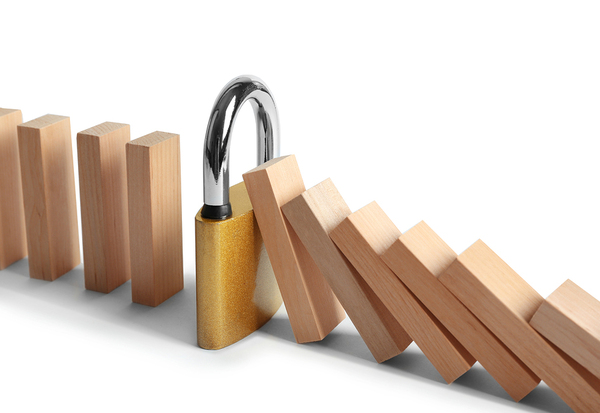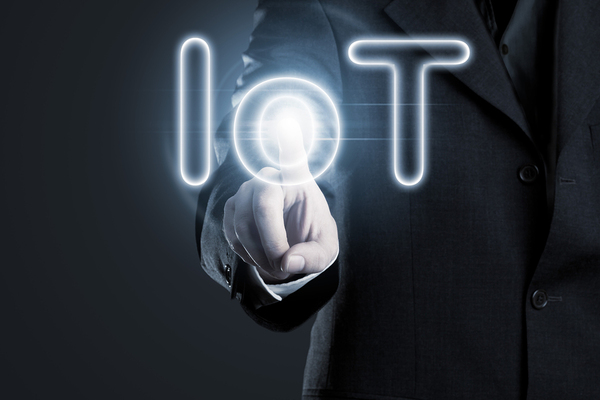Blockchain and the Impact on Digital Transformation
Blockchain and IoT Smart Devices

While most people outside the technical arena are most familiar with the concept of Bitcoin, the underlying technology behind Bitcoin (and all digital currencies) is blockchain. But there is much more to blockchain than that. It can also be used for purposes like instant verification of network transactions without a centralized authority.
This isn't a fringe element, either. Over 40 leading financial organizations, plus a growing number of companies in other industries, are experimenting with blockchain technology to track asset ownership with security and transparency. The movement could make transactions faster, lower transactional costs, and help to reduce the risks of fraud. Blockchain can also be used apart from financial transactions, such as tracking assets as they move through supply chains and initiating and enforcing contracts electronically.
Still, blockchain is an experimental technology for now. There are not a lot of tested use cases, and few experts to turn to for advice and guidance. Unlike more proven technologies, it's a buyer beware situation when attempting to leverage blockchain. What is it? What does it mean for Digital Transformation? Let's take a deeper look. ![]()
What Blockchain Is

A blockchain is essentially a structure of data that enables the user to make a digital ledger of transactions and share the ledger across a distributed network. Blockchain uses cryptography to let each of the network users manipulate the ledger securely without a centralized authority. After a block of data is recorded in the ledger, it is almost impossible to change or delete. In order to add to the ledger, you have to run an algorithm to evaluate and verify the transaction in progress.
All of the users have copies of the blockchain. If a majority of the nodes concur that the transaction appears to be valid (because the identifying information matches the history of the blockchain), the proposed transaction is approved and a new block is added to the chain. It is potentially one of the most airtight security mechanisms you can imagine, because there's no point of egress to breach. It's distributed, not centralized.
How Blockchain Works
Blockchain is generally used to describe a version of the distributed ledger structure and the consensus processes across the distributed environment. Different configurations of the blockchain use different mechanisms for achieving consensus. This depends on the network's size, what kind it is, and what it's actually being used for. For example, the use case of blockchain for digital assets like stocks and land titles would work somewhat differently than that for business processes like insurance claims, healthcare audits and tracking purchasing approvals.
The blockchain behind Bitcoin, is public, and therefore is 'permissionless'. This means that anybody can contribute to the ledger of the blockchain. In 'permissioned' blockchains, the network is comprised of known users. Every ten minutes, all of the transactions are checked, cleared, and stored in a block. This block is linked to the one before it, which is linked to the one before that, etc. This link structure creates a chain of blocks (hence, blockchain). Every block has to refer back to the block before it in the chain in order to validate.
The structure creates permanent time stamps, saves those values, and distributes them to all the other participants. So, no one can go back and alter the ledger. For example, to steal someone's real property or use real property for fraudulent purposes, you would literally have to go back and rewrite the entirety of the real property's history on the blockchain, while everyone involved looked on. That's quite nearly impossible. Anyone can download and run the distributed ledger on their work or home computer, so it's very public.
In The Wall Street Journal, Guardtime is quoted as explaining the blockchain this way: "Assume an organization has 10 transactions per second. Each of those transactions receives its own digital signature. Using a tree structure, those signatures are combined and given a single digital fingerprint - a unique representation of those transactions at a specific time. That fingerprint is sent up the tree to the next layer of infrastructure, such as a service provider or telecom company. This process happens for every organization in the network until there is a single digital fingerprint that encompasses all the transactions as they existed during that particular second. Once validated, that fingerprint is stored in a blockchain that all the participants can see. A copy of that ledger is also sent back to each organization to store locally. Those signatures can be continuously verified against what is in the blockchain, giving companies a way to monitor the state and integrity of a particular asset or transaction ...
"... Anytime a change to data or an asset is proposed, a new, unique digital fingerprint is created. That fingerprint is sent to each client node for validation. If the fingerprints don't match, or if the change to the data doesn't fit with the network's agreed-upon rules, the transaction may not be validated. This setup means the entire network, rather than a central authority, is responsible for ensuring the validity of each transaction."
The Blockchain is Ideal for the Internet of Things

In the IoT, billions of smart devices will be communicating and sharing important data on just about everything -- healthcare, manufacturing, financial services, food processing, environmental science, lifestyles, and more. The IoT demands a ledger that works with it, empowering business and commerce in the same distributed way in which the IoT works. Blockchain is the obvious answer. Over time blockchain will be intertwined with IoT, one of the accelerators of Digital Transformation.
Where can that lead in the future? Say you're at your local burger joint, and you'd really like to know where your hamburger meat came from. Or, maybe you're trying to track down land titles so that you can rebuild the homes of victims following an earthquake or tsunami. Perhaps you just want to force your government workers to be more transparent and accountable. The possibilities of blockchain technology are only as limited as our imaginations. And the need to assure service delivery will continue to grow in importance in our agile and complex connected world.
Service Assurance for Businesses using Blockchain
As a distributed ledger system, blockchain has a number of moving parts and adds yet another layer of IT infrastructure complexity. The blockchain ecosystem can include virtual machines (VMs) containing the distributed ledger stacks; middleware supporting cryptology and identity services; and applications supporting various industries including financial services, manufacturing, retail and healthcare. The service delivery path includes computers and servers that participate in the exchange of blockchain transactions. Blockchain can suffer when things break like slow or degraded application response time, latency and RTT issues, TCP handshaking not working, and multi-tier application or database server failures.
NETSCOUT’s Service Assurance solutions help Enterprises that utilize blockchain technology for IoT to roll out their new applications and services with confidence.
Are you looking for a service assurance solution for today and tomorrow? You need to take advantage of our ebook: Service Assurance for Dummies.